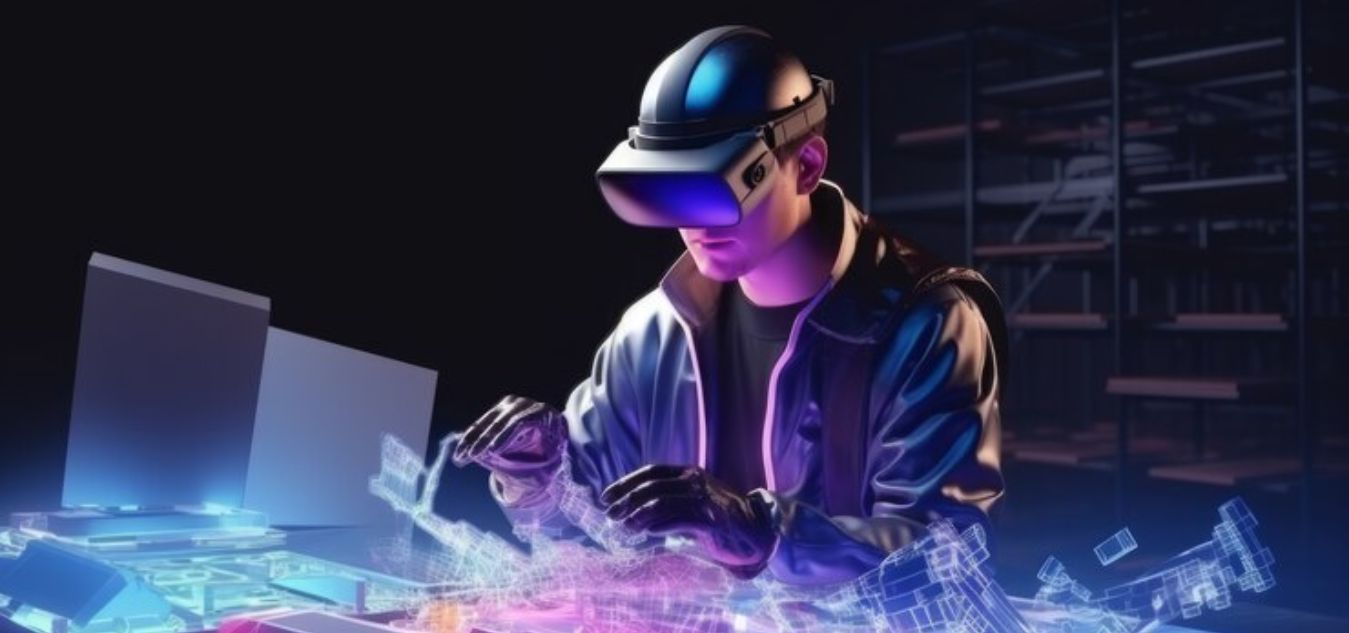
How to Become a VR Designer in 2025: The 8-Step Professional Roadmap
The field of Virtual Reality (VR) is exploding, and with it, the demand for talented VR Designers who can craft compelling, comfortable, and functional immersive experiences. If you’ve been searching for a detailed, professional, and actionable plan to pivot into this cutting-edge industry, you’ve come to the right place.
This roadmap will guide you through the essentials of launching your career in Virtual Reality by covering:
- Skill Acquisition: Mastering essential VR development and design tools.
- Portfolio Building: Showcasing high-impact VR projects.
- Industry Networking: Connecting with top VR companies.
- Job Placement: Securing professional VR design roles.
This is not just a general overview; this is the 8-step professional roadmap you need to follow in 2025 to move from aspirant to successful VR design professional. We cover everything from essential skill acquisition and portfolio creation to strategic networking and securing your first industry role.
What is a VR Designer?
A VR designer creates immersive virtual environments and experiences that simulate reality. These professionals combine creativity with technical expertise to design VR applications for entertainment, training, education, or business solutions.
Key Responsibilities of a VR Designer:
- Conceptualizing VR experiences that align with project goals.
- Designing 3D environments, objects, and interfaces for VR applications.
- Collaborating with developers to bring designs to life using VR software and engines.
- Testing and refining user experiences for optimal immersion and functionality.
How to Become a VR Designer: Proven Step-by-Step Guide
Step 1: Build Your Foundation
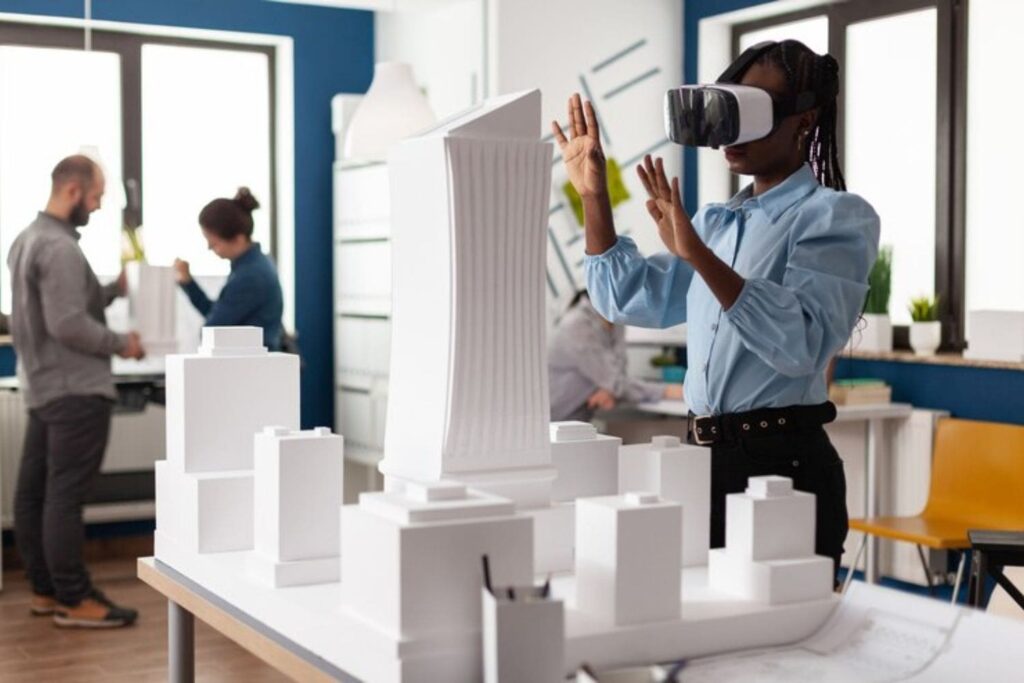
Understand VR Technology
Learning how VR operates is the first step toward becoming a VR designer.
Explore VR Components:
- Hardware:
- Headsets: Oculus Quest, HTC Vive, PlayStation VR.
- Controllers: Devices enabling physical interaction in VR.
- Software:
- Development platforms like Unity and Unreal Engine.
Practical Tips:
- Explore VR apps to understand user perspectives.
- Watch documentaries about VR evolution and its applications.
Learn the Basics of Design
A strong understanding of design principles is essential for creating visually appealing and functional VR environments.
Topics to Focus On:
- Color Theory: Create visually harmonious environments.
- Spatial Awareness: Understand how objects are perceived in a 3D space.
- Interaction Design: Focus on how users engage with virtual objects.
Step 2: Gain Technical Skills
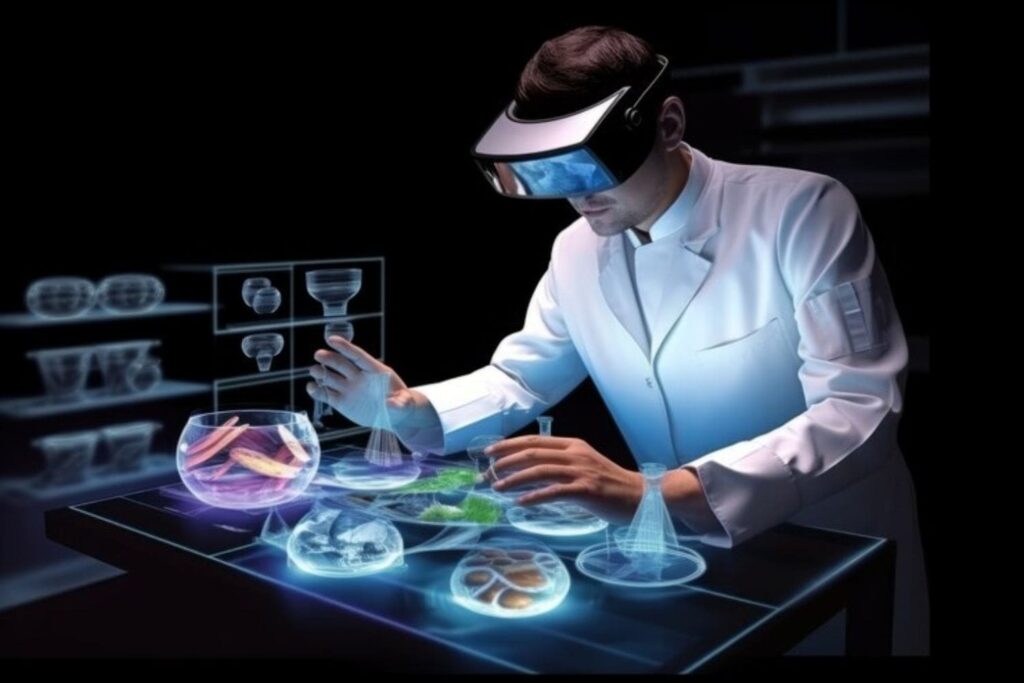
To become a VR designer, mastering specific tools and software is crucial.
Learn 3D Modeling and Animation
Creating realistic virtual environments requires proficiency in 3D modeling.
Recommended Software:
- Blender (free and versatile).
- Autodesk Maya (used for advanced animation).
Action Steps:
- Watch tutorials on YouTube or platforms like Udemy.
- Practice creating 3D objects like chairs, rooms, or vehicles.
Master VR Development Platforms
Unity and Unreal Engine are the backbone of VR design.
Why Unity?
- Beginner-friendly.
- Extensive library of assets and resources.
Why Unreal Engine?
- Superior graphics quality.
- Ideal for photorealistic projects.
Understand VR-Specific UX Design
User Experience (UX) in VR goes beyond traditional design; it involves creating intuitive and immersive interactions.
Core Principles:
- Comfort and Accessibility: Minimize motion sickness by avoiding abrupt movements.
- Realism: Use physics and textures to enhance immersion.
- Intuitive Interactions: Ensure users can interact naturally with the environment.
Learn Programming Basics
Understanding coding enhances your ability to customize and troubleshoot VR applications.
Programming Languages to Learn:
- C# for Unity.
- Blueprint Visual Scripting for Unreal Engine.
Step 3: Build a Portfolio
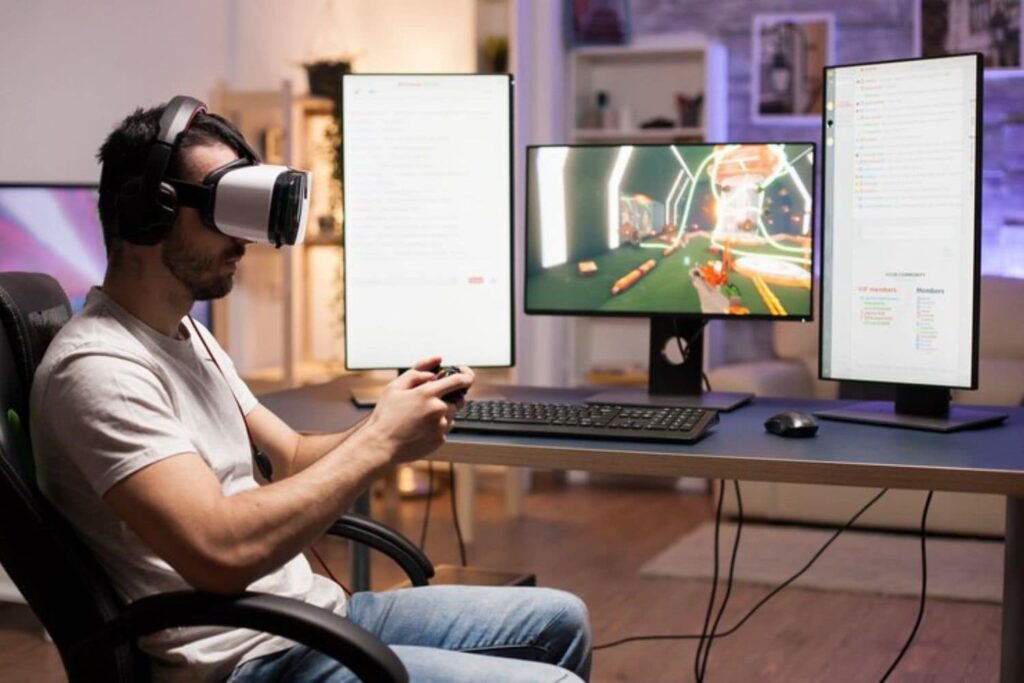
A strong portfolio is your ticket to getting noticed in the VR design industry.
What to Include:
- VR Environments: Showcase detailed 3D spaces you’ve designed.
- Interactive Prototypes: Highlight user interaction features.
- Case Studies: Document the design process and problem-solving steps.
Tips for Presentation:
- Create short demo videos for each project.
- Use platforms like Behance or ArtStation to display your work.
Step 4: Gain Real-World Experience
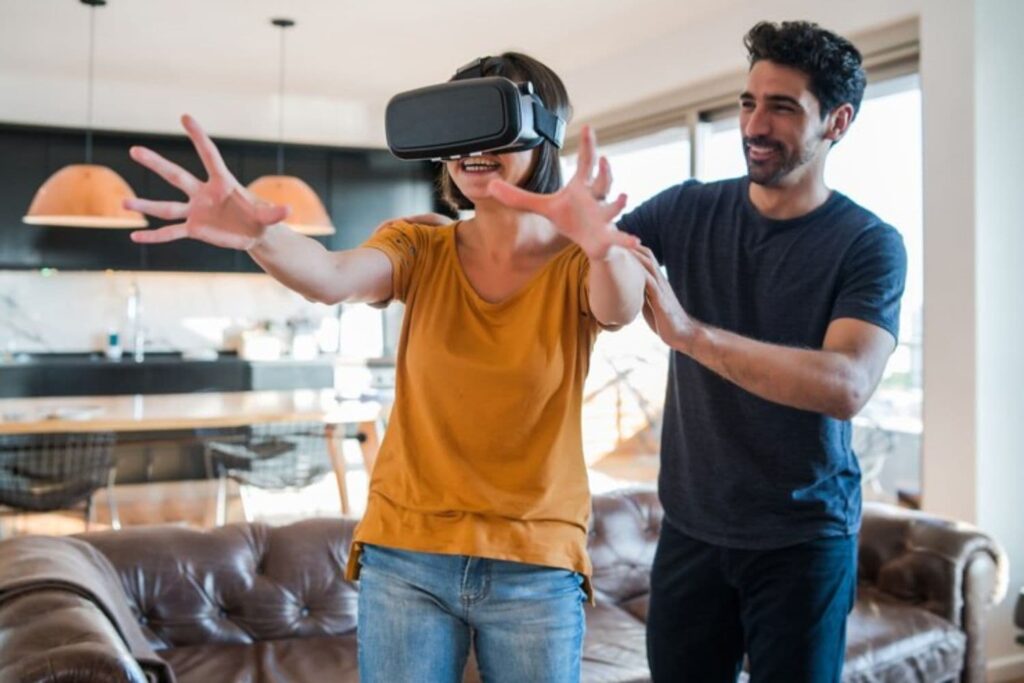
Freelancing Opportunities
Join platforms like Fiverr or Upwork to work on VR projects for clients.
Participate in Hackathons
These events provide an opportunity to work on real projects, network with peers, and gain valuable experience.
Internships
Intern at VR-focused companies or startups to gain hands-on experience.
Step 5: Pursue Formal Education
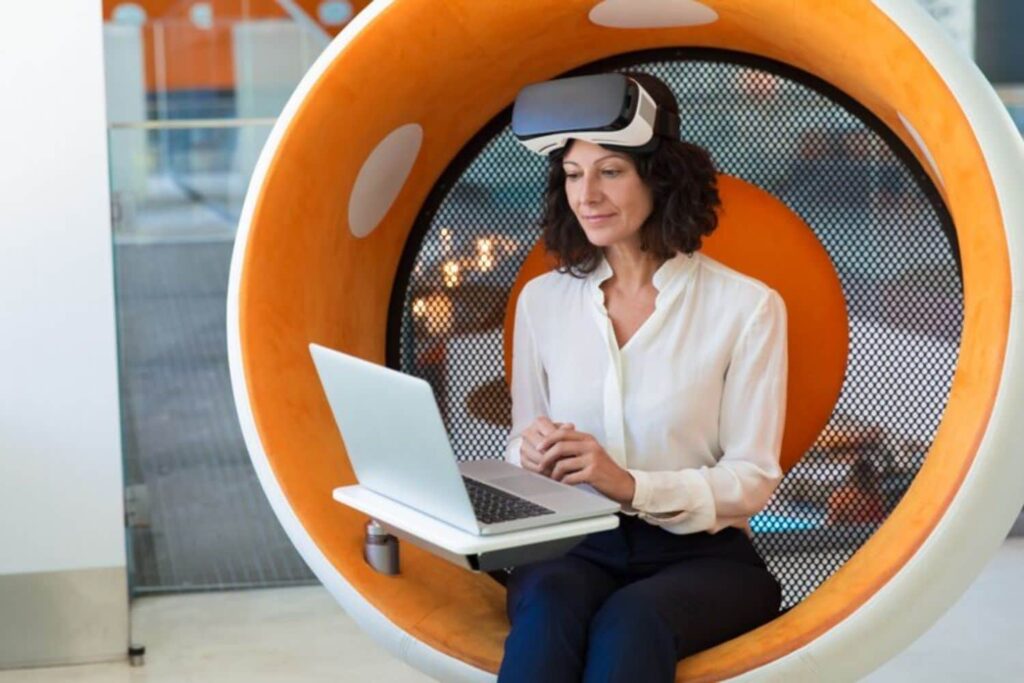
While formal degrees aren’t mandatory, they can give you an edge in the job market. Explore virtual reality’s transformative role in formal education. Immerse in interactive learning, enhance engagement, and unlock innovative teaching methods for a cutting-edge academic experience. Discover VR-powered education’s limitless possibilities today!
Relevant Degrees:
- Bachelor’s in Game Design, Interactive Media, or Computer Science.
Certifications:
- Coursera: VR specialization by University of London.
- Udemy: Complete VR design courses tailored for beginners.
Step 6: Network with Professionals
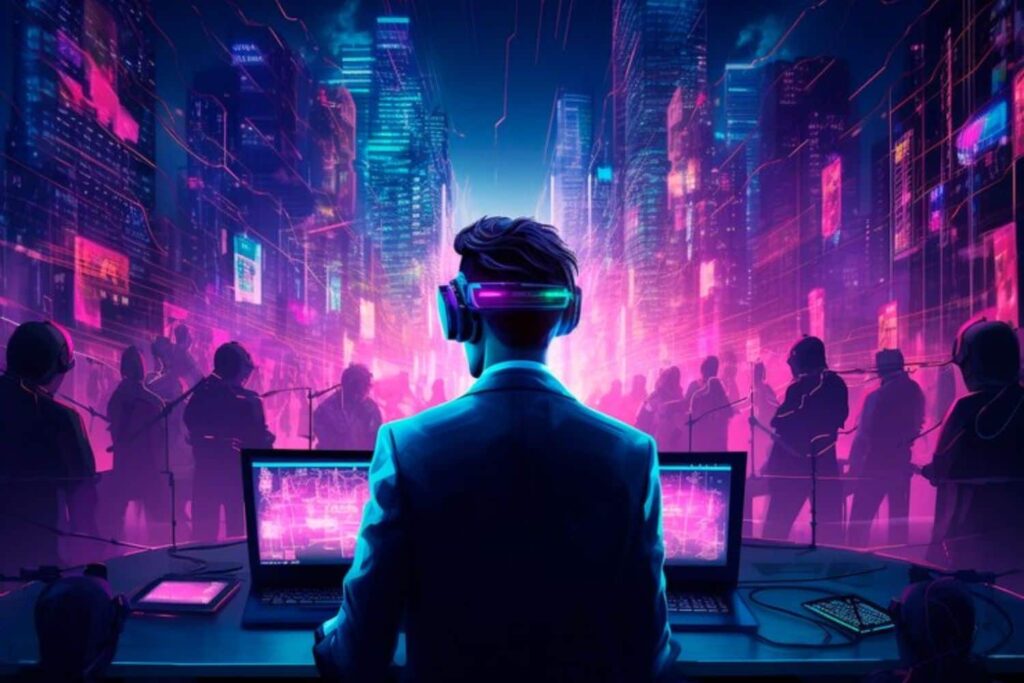
Connecting with like-minded individuals and industry experts can open doors to new opportunities. Connect with industry professionals in an immersive virtual reality network. Enhance collaboration, expand your opportunities, and stay ahead in your career with cutting-edge VR networking solutions.
Networking Channels:
- LinkedIn: Join groups related to VR design.
- Conferences and Expos: Attend events like VR/AR Global Summit.
- Online Communities: Participate in forums like Reddit’s r/VRDev.
Step 7: Stay Updated
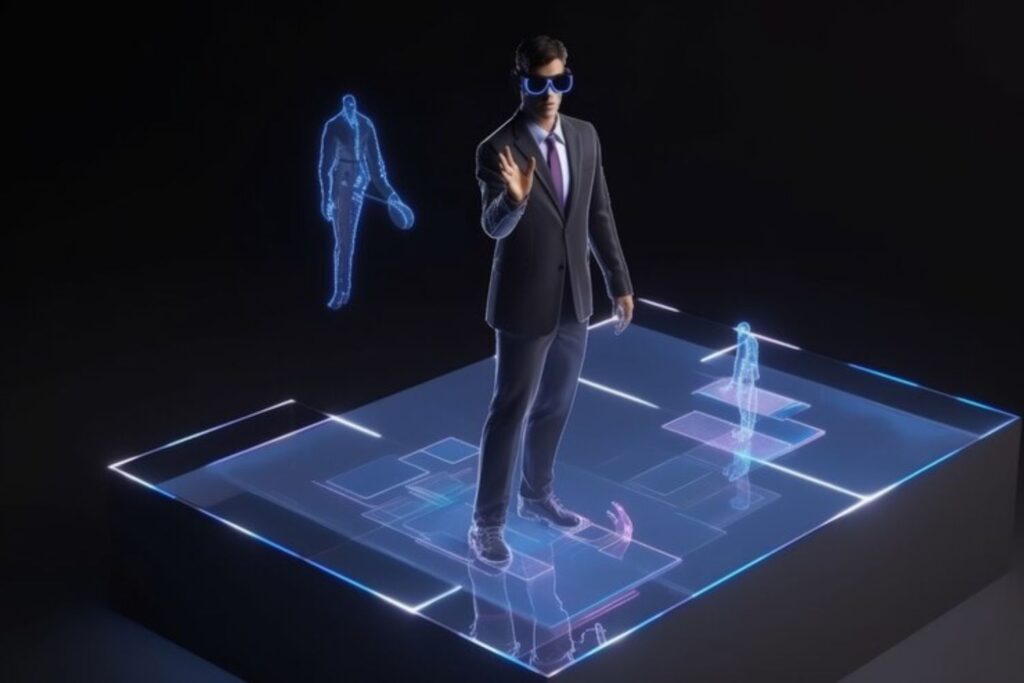
The VR industry evolves rapidly. Staying informed about the latest trends and tools is essential. Discover the latest Virtual Reality updates transforming immersive experiences! Stay informed on cutting-edge VR technology, trends, and innovations shaping gaming, education, healthcare, and beyond. Your gateway to the future of virtual worlds.
Key Trends for 2025:
- AI Integration: Using AI to create dynamic VR experiences.
- Wearable VR Devices: Lightweight and portable VR gear.
- Cross-Platform Experiences: Designing VR applications compatible across devices.
Step 8: Apply for Jobs
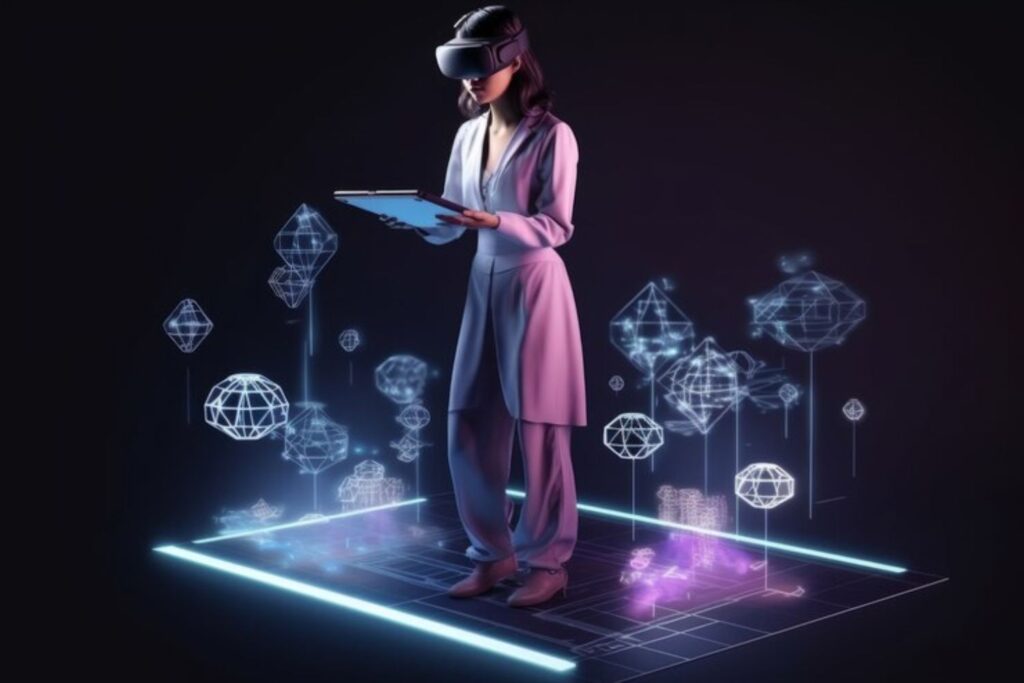
Once your portfolio is ready, you can start applying for VR design roles. Apply now to showcase your VR design expertise, craft immersive experiences, and join innovative teams shaping the future of virtual reality. Start today!
Where to Look:
- Job Boards: Indeed, Glassdoor, and LinkedIn.
- VR Studios: Research companies like Oculus, Unity, or Magic Leap.
Estimated Timeline to Become a VR Designer
| Stage | Timeframe | Key Activities |
|---|---|---|
| Learn VR Basics | 1–2 Months | Explore VR hardware/software, basic concepts. |
| Master Technical Skills | 3–12 Months | Learn 3D modeling, engines, programming. |
| Build Portfolio | Ongoing | Work on projects and showcase them. |
| Gain Experience | 6–18 Months | Freelance, internships, hackathons. |
Tools for VR Design
| Tool/Skill | Purpose | Recommended Platforms | Learning Time |
|---|---|---|---|
| 3D Modeling | Create objects/environments for VR. | Blender, Maya | 3–6 months |
| VR Development Engines | Build interactive VR experiences. | Unity, Unreal Engine | 6–12 months |
| Programming Basics | Customize and troubleshoot VR projects. | Codecademy, Unreal Tutorials | 6–12 months |
| UX Design for VR | Optimize user interaction and comfort. | Figma, Adobe XD | 3–6 months |
Skills Required to Become a VR Designer
A career in VR design requires a mix of technical expertise, creative instincts, and user-centered thinking. Here’s a breakdown of the skills you’ll need:
1. Technical Skills
- 3D Modeling and Animation: Design lifelike characters, objects, and environments.
- Programming Knowledge: Understand how to write scripts for VR interactions.
- Proficiency in Game Engines: Work with Unity or Unreal Engine to build VR experiences.
- UX/UI Design for VR: Focus on user comfort, intuitive navigation, and reducing motion sickness.
2. Creative Skills
- Storytelling: Create compelling narratives that guide users through VR experiences.
- Visual Design: Use colors, textures, and lighting effectively to enhance immersion.
- Problem-Solving: Address challenges in user experience, performance, and technical constraints.
3. Soft Skills
- Collaboration: Work closely with developers, animators, and clients.
- Adaptability: Keep up with the ever-evolving VR technology and tools.
- Attention to Detail: Focus on the nuances that elevate a VR experience from good to exceptional.
Essential Tools for VR Design
Mastering the right tools is a must for any VR designer. Here’s a curated list of software and platforms to get you started:
1. Design and Modeling Tools
- Blender: A free and versatile tool for 3D modeling and animation.
- Autodesk Maya: Industry-standard software for advanced 3D modeling and visual effects.
- Substance Painter: Ideal for texturing and rendering high-quality 3D assets.
2. Development Tools
- Unity: A beginner-friendly game engine with vast resources. Supports C# scripting.
- Unreal Engine: Known for high-quality visuals and powerful Blueprints for visual scripting.
- Godot: An open-source game engine gaining popularity for its flexibility.
3. Prototyping and UX Tools
- Figma: Useful for creating UI/UX prototypes for VR applications.
- Adobe XD: For wireframing and designing interactive prototypes.
- Gravity Sketch: Enables 3D sketching directly in VR, helping designers visualize ideas more effectively.
4. Collaboration and Task Management
- Trello: Simplifies project tracking and task management.
- Slack: Facilitates team communication and file sharing.
- Notion: An all-in-one workspace for organizing notes, tasks, and projects.
Tips for Aspiring VR Designers
Here are some actionable tips to help you succeed as a VR designer:
1. Stay Updated on Industry Trends
The VR industry is evolving rapidly. Keep yourself informed by following blogs like VRScout, Road to VR, and UploadVR. Attend conferences like the VR/AR Global Summit to network with professionals and learn about emerging trends.
2. Build a Strong Portfolio
- Showcase your best work, including 3D models, interactive VR projects, and detailed case studies.
- Highlight your problem-solving abilities by explaining how you overcame challenges during project development.
- Use platforms like ArtStation or create a personal website to display your portfolio.
3. Experiment with New Tools
Don’t limit yourself to one tool or platform. Experimenting with different software can help you discover more efficient workflows and improve your skill set.
4. Seek Feedback
Engage with VR communities on Reddit (e.g., r/VRDev) or Discord to share your work and get constructive feedback. This helps refine your designs and connects you with like-minded individuals.
5. Focus on User Comfort
User comfort is crucial in VR. Minimize motion sickness by maintaining stable frame rates and avoiding abrupt camera movements. Always test your designs to ensure smooth navigation and interaction.
6. Start Small, Then Scale
When working on your first projects, start with simple concepts and gradually move to complex environments. This helps you build confidence and hone your skills.
7. Take Advantage of Online Learning Platforms
Learn new skills through platforms like:
- Coursera: Offers VR specialization courses by top universities.
- Udemy: Affordable courses on Unity, Unreal Engine, and Blender.
- YouTube: Free tutorials on various VR design techniques and tools.
8. Collaborate with Developers
Collaborating with VR developers can give you insight into the technical aspects of VR, enabling you to design more feasible and effective solutions.
Why Pursue a Career in VR Design?
The demand for skilled VR designers is skyrocketing as industries adopt VR to enhance user engagement and solve real-world problems.
Key Benefits of a Career in VR Design:
- High Demand: VR is a rapidly growing field with diverse applications.
- Creative Freedom: You can design immersive, interactive worlds that captivate users.
- Technological Innovation: Stay at the cutting edge of tech advancements.
Whether you’re passionate about gaming, education, or virtual collaboration, learning how to become a VR designer opens doors to exciting opportunities.
Career Opportunities in VR Design
Once you learn how to become a VR designer, various career paths open up across industries:
- Gaming: Design immersive worlds for video games.
- Healthcare: Create VR simulations for training or therapy.
- Real Estate: Develop virtual property tours.
How Much Do VR Designers Make?
Virtual Reality (VR) design is an exciting and rapidly growing field, offering lucrative opportunities for professionals. Salaries for VR designers can vary widely based on experience, location, and industry demand. Below is an overview of what VR designers typically earn:
Key Factors Affecting Salaries
- Experience Level: Entry-level designers may earn less, but experienced professionals with a portfolio can command higher pay.
- Location: Designers in tech hubs like Silicon Valley or international hotspots such as London often earn more.
- Industry: Sectors like gaming and healthcare tend to offer higher salaries compared to others.
Average Salaries (Annual)
| Experience Level | Salary Range (USD) |
|---|---|
| Entry-Level (0-2 years) | $50,000 – $75,000 |
| Mid-Level (3-5 years) | $76,000 – $100,000 |
| Senior-Level (6+ years) | $101,000 – $150,000 |
Freelance Opportunities
Freelance VR designers often charge between $40 to $150 per hour, depending on their expertise and project scope.
If you’re curious how to become a VR designer, the potential earnings can be quite rewarding. Investing in VR design skills today could open the door to a promising and financially stable career in the future, as the industry continues to expand.
Do You Need a Degree to Be a VR Developer or Designer?
The world of virtual reality (VR) is rapidly expanding, making VR development a sought-after career. But is a degree necessary to break into this field? While a degree can provide structure and depth, it’s not the only path to success.
Key Considerations:
- Formal Education
A degree in computer science, software engineering, or game design can give you a solid foundation. These programs teach essential tools like Unity, Unreal Engine, and programming languages such as C++ or Python. - Self-Learning Opportunities
Many aspiring developers learn VR skills through online courses, bootcamps, or free tutorials. Platforms like Coursera and YouTube offer affordable, flexible options for learning. - Experience and Portfolio
Employers value hands-on experience and a strong portfolio. Building VR projects or games and showcasing them on platforms like GitHub can set you apart. - Networking and Industry Exposure
Attending VR events, joining communities, or securing internships can help you connect with professionals and gain practical insights.
| Degree Path | Self-Learning Path |
|---|---|
| Structured curriculum | Flexible and self-paced |
| Access to university resources | Focused on practical skills |
| Academic credentials | Portfolio-driven credibility |
A degree can help, but it’s not the only route. Passion, persistence, and practical experience are key to mastering how to become a VR designer or developer. Choose the path that aligns with your goals and learning style.
Is VR Designer a Good Career?
Virtual Reality (VR) design is an exciting and rapidly evolving career that merges creativity with cutting-edge technology. VR designers craft immersive experiences for various industries, including gaming, education, healthcare, and architecture. With the growing adoption of VR technologies, the demand for skilled designers is on the rise, making it a promising career choice.
Key Points to Consider:
- High Demand: VR is expanding into industries like training simulations, therapy, and real estate, increasing opportunities for designers.
- Creative Freedom: VR design allows you to think outside the box, creating interactive environments and user experiences that were once unimaginable.
- Lucrative Salary: Experienced VR designers often enjoy competitive salaries due to the specialized nature of the work.
- Future-Proof Skills: Learning VR design equips you with expertise in 3D modeling, UX design, and programming, skills that are in demand across tech fields.
Conclusion
Becoming a VR Designer in 2025 is a fulfilling path for those with a passion for technology, design, and problem-solving. This career offers stability and innovation as VR adoption skyrockets across games, healthcare, and education.
Actionable Next Steps:
- Master the Core Tools: Prioritize learning industry standards like Unity, Unreal Engine, and 3D modeling software.
- Embrace Continuous Learning: The field evolves quickly, making staying updated with the latest trends non-negotiable.
- Unlock Limitless Potential: Your dedication and creativity will allow you to build everything from immersive games to practical, life-changing industry solutions.
Frequently Asked Questions (FAQs)
What do VR designers do?
VR designers create immersive virtual reality experiences by crafting 3D environments, user interfaces, and interactive elements. They combine artistic creativity with technical skills to design engaging, functional virtual worlds. Their work spans gaming, education, healthcare, and more, ensuring seamless user experiences in VR applications. Collaboration and innovation are key to their role.
What education do you need to be a VR developer?
To become a VR developer, you typically need a degree in computer science, software engineering, or a related field. Skills in programming languages like C#, C++, or Python, along with experience in game engines like Unity or Unreal Engine, are essential. Certifications and hands-on VR projects can boost career prospects.
How to enter the VR industry?
Become a VR Designer: Quick Guide
To become a VR designer, focus on these SEO-friendly steps:
1)Gain Skills: Master VR development, design, or hardware via courses or degrees.
1) Build a Portfolio: Showcase your VR projects and creativity.
3) Network: Attend industry events to make valuable connections.
4) Gain Experience: Apply for internships or entry-level roles at VR companies.
5) tay Current: Continuously learn about the latest VR trends.



